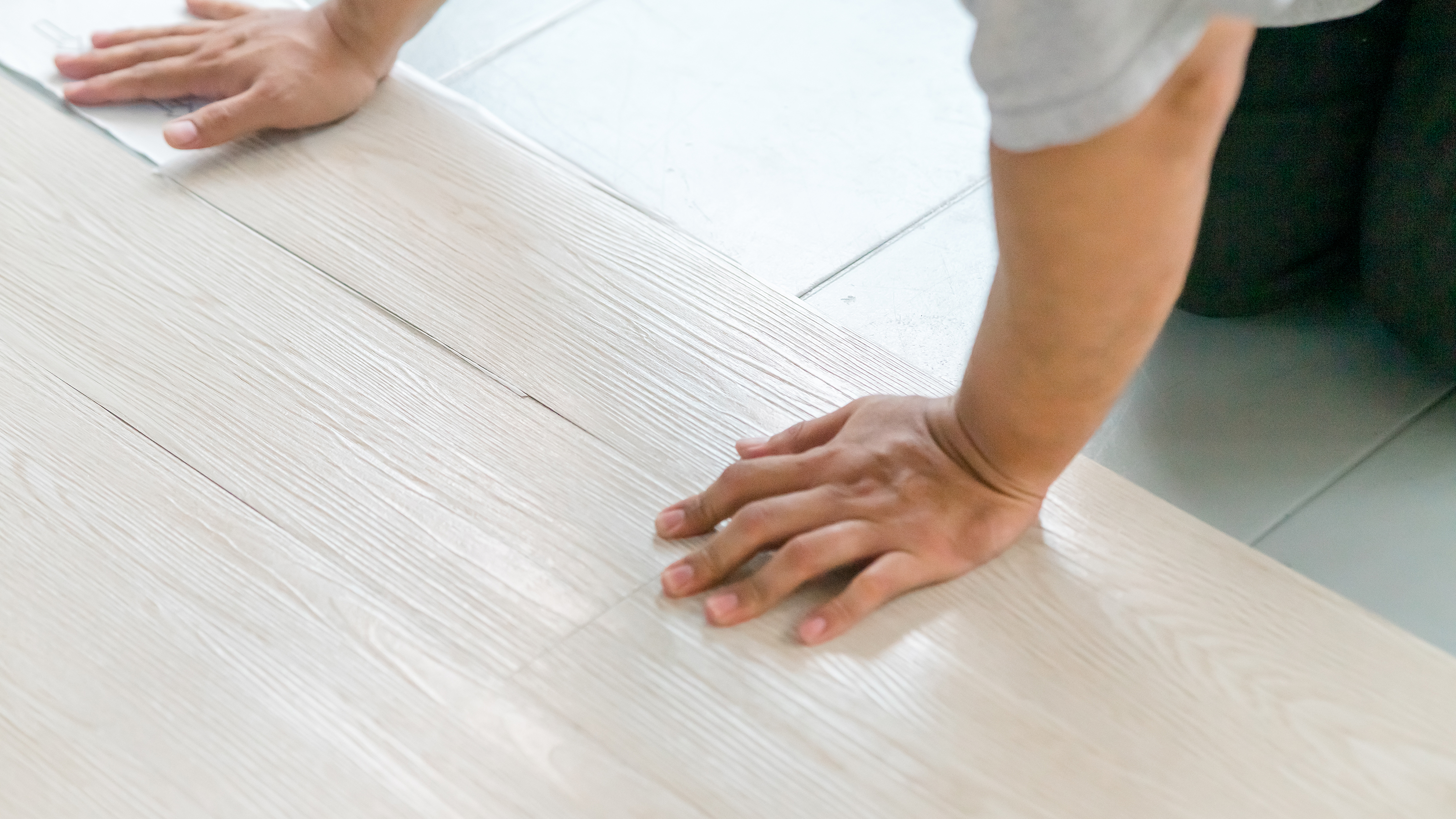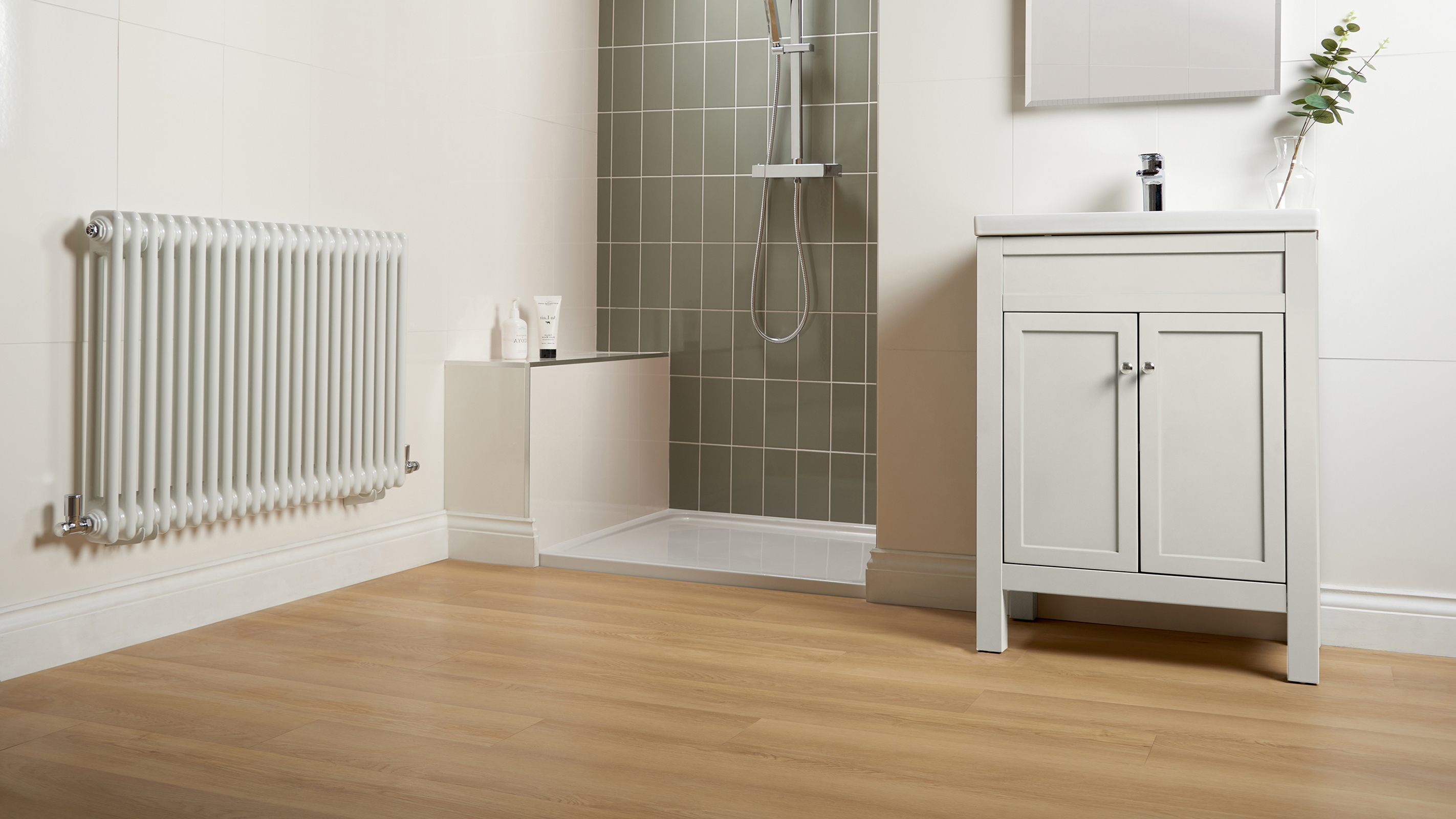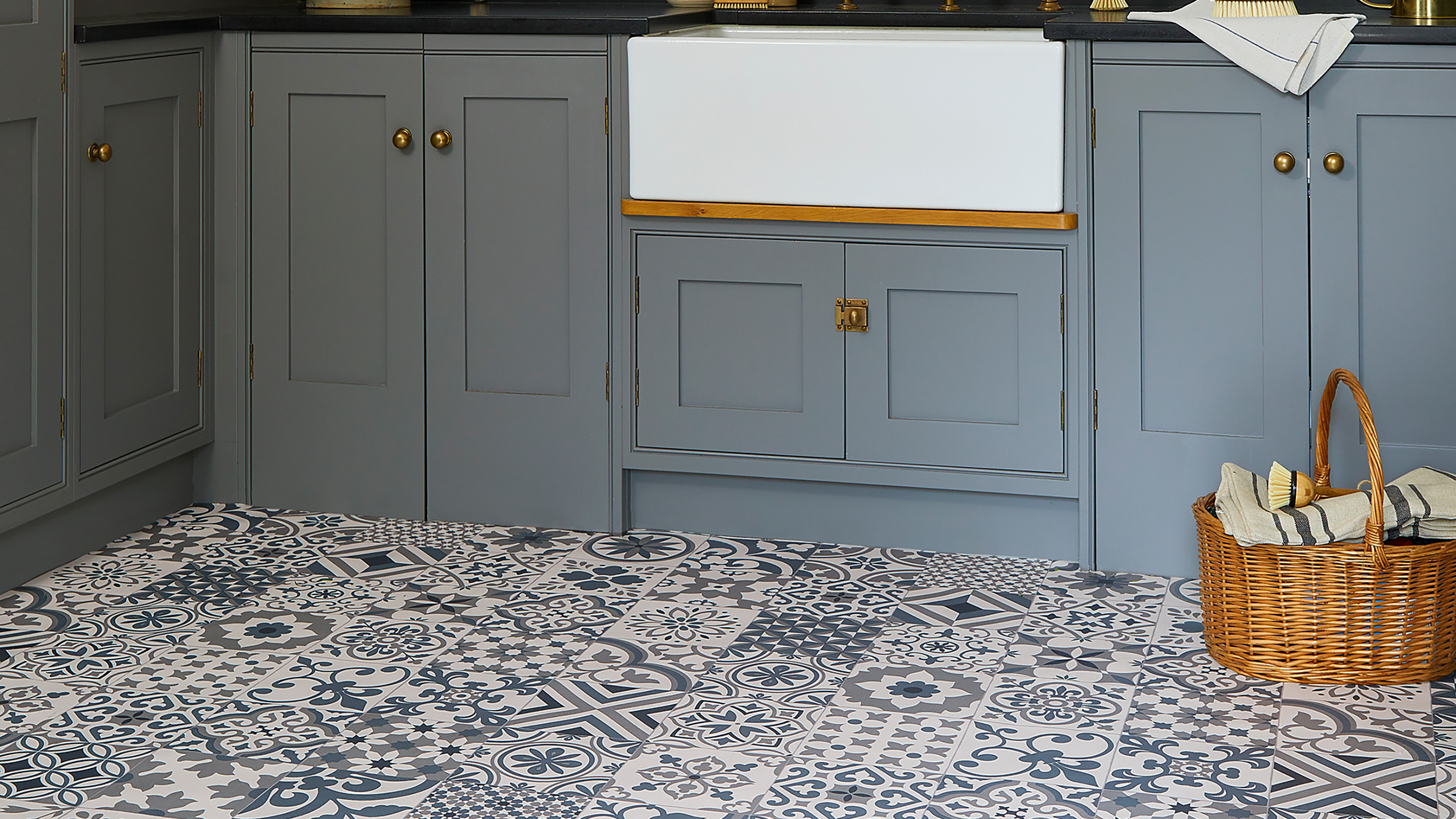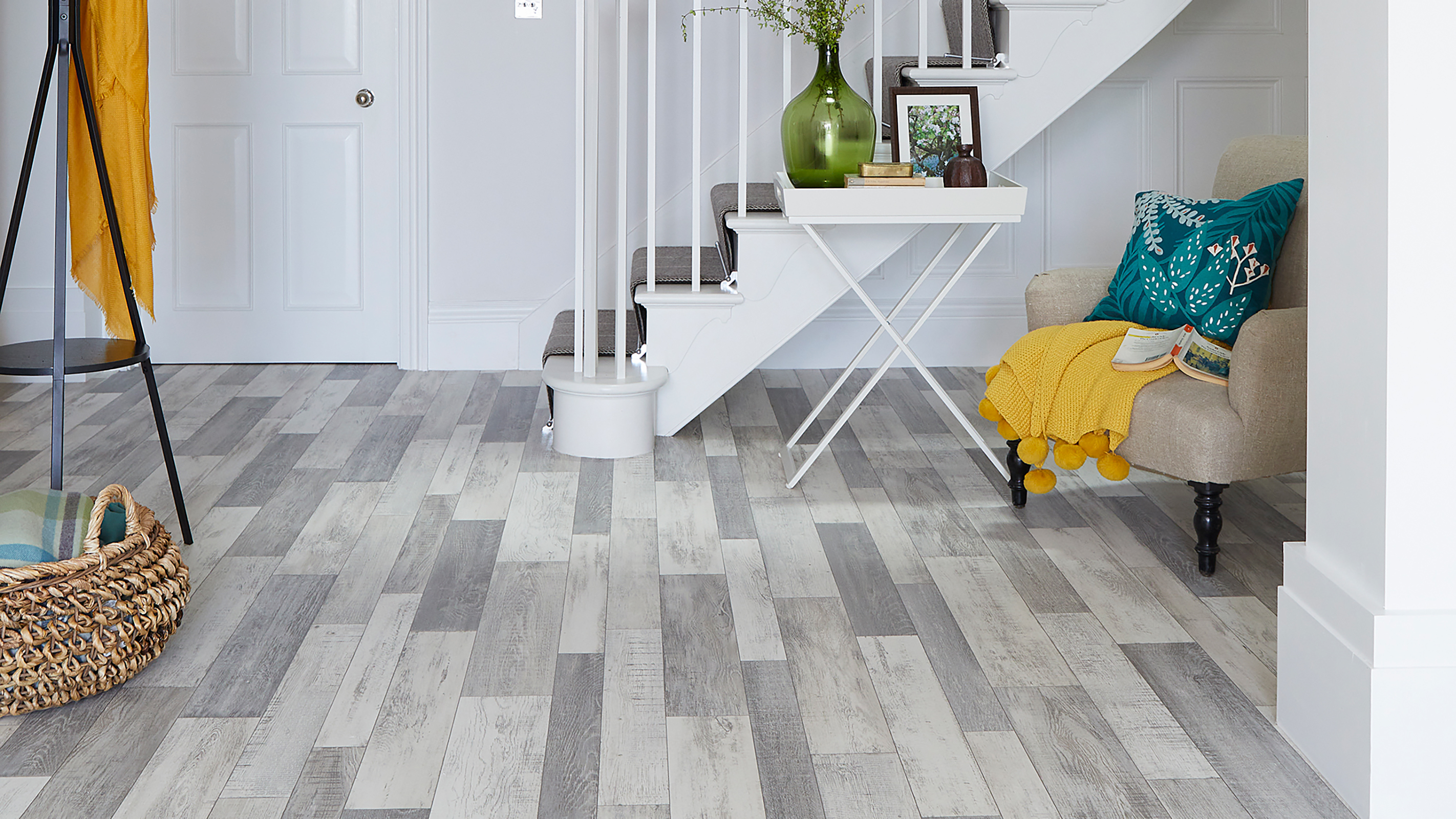Can you lay vinyl over tiles? We have the answer
Can you lay vinyl over tiles? It is a common question amongst those renovating a house or modernising a bathroom or kitchen — and we are here to help

There are many reasons why you might be asking the question ‘can you lay vinyl over tiles?’ Perhaps you have just taken on a renovation project and are looking for a quick and cost-effective way to cover up old-fashioned ties installed by previous owners many years ago, or maybe you are carrying out a kitchen makeover and are looking at different types of flooring to completely change the look of the space without too much disruption to your day-to-day life.
Whatever your reasons, our guide is here to explain what is involved with laying vinyl over existing tiles, whether it is a good idea, how to carry out the job if you decide to go ahead and the best products to choose.
We have also been in touch with some experts to ensure that the outcome you want is the one you achieve. Read on to discover everything you need to know.

Can you lay vinyl over tiles? Assessing your floor
In short, yes, you can lay vinyl flooring over tiles, but before getting into the ins and outs of the job, it is important to take a look at the factors that could affect the viability of this job.
Renovating old floors can throw up a number of unexpected issues and it pays to be prepared for these. If, for example, you are laying vinyl flooring over an old quarry tile floor you should most certainly check first what kind of subfloor the quarry tiles were laid on.
It was not uncommon for these types of tiles to be laid on bare earth, ash or sad. They were designed to be breathable and so laying a new covering over them can result in damp issues.
If this turns out to be the case, the safest solution will be to take up the tiles and dig out the floor to a level that will allow for insulation, a damp-proof membrane, concrete or limecrete and your new floor covering.
Bring your dream home to life with expert advice, how to guides and design inspiration. Sign up for our newsletter and get two free tickets to a Homebuilding & Renovating Show near you.
If you are laying vinyl over other types of tiles, it is important that they are level and as free of imperfections and bumps as possible.

Which vinyl is best over tiles?
There are several types of vinyl flooring that can be installed on top of existing tiles, but some will be better than others.
“If the vinyl is a thick vinyl with a textile backing, the textile backing should absorb the unevenness of the grout lines of the tiles,” says Inga Morris-Blincoe, General Manager at Lifestyle Floors.
“However, if you are laying a thin vinyl without a textile backing, your fitter will probably need to do some preparation, such as filling in the grout lines, otherwise these imperfections will transfer to the surface of the vinyl as it ‘relaxes’ over time. Either way, your flooring retailer should be able to survey the floor in advance and advise you on what’s possible.”

How do you lay vinyl flooring over tiles?
Many people choose to lay vinyl flooring on a DIY basis, although most builders or floor fitters will also be happy to take this job on.
If you decide to have a go yourself, you should begin by levelling and thoroughly cleaning the floor tiles. Any very deep grout lines will need to be filled with a levelling compound.
The way in which the vinyl is laid will depend on whether you have opted for a roll, glue-down product or floating planks — the choice is yours. If, however, you have underfloor heating beneath your tiles you might be safer with floating planks as the adhesive of some glue down vinyl sheeting can only withstand certain temperatures — usually a maximum of 27˚C which, in all likelihood is unlikely to be reached through the tile. That said, vinyl is actually amongst the best flooring for underfloor heating.
Can you lay vinyl over tiles with underfloor heating?
While installing vinyl over a tiled floor that has been laid over underfloor heating is often trouble-free, there are some issues to be aware of. These mainly affect the heat output that will be achievable after laying an additional flooring level.
"It’s worth understating how the UFH system is performing with the current floor finish as if there are already issues with performance, insulating vinyl is not going to improve things at all," explains Dan Clist, Trainer at Nu-Heat.
"If the system is performing satisfactorily then the impact of changing the surface finish needs to be fully comprehended. The thing with vinyl is that the manufacturers usually specify a maximum surface temperature of 27°C, compared with the BS 1264 limit of 29°C used in the majority of cases with tiles.
"The additional build-up in height will have a small impact on the system's performance, but the levelling compounds (sometimes referred to as latex) are generally thermally conductive, plus the vinyl tends to be fairly thin too — the main performance implication will be due to the reduction in surface temperature.
"The suppliers and installers of the vinyl will be best placed to offer advice and guidance on checking the stability of the floor, the most suitable method of preparation of the existing surface and the type and amount of levelling compound."
Natasha was Homebuilding & Renovating’s Associate Content Editor and was a member of the Homebuilding team for over two decades. In her role on Homebuilding & Renovating she imparted her knowledge on a wide range of renovation topics, from window condensation to renovating bathrooms, to removing walls and adding an extension. She continues to write for Homebuilding on these topics, and more. An experienced journalist and renovation expert, she also writes for a number of other homes titles, including Homes & Gardens and Ideal Homes. Over the years Natasha has renovated and carried out a side extension to a Victorian terrace. She is currently living in the rural Edwardian cottage she renovated and extended on a largely DIY basis, living on site for the duration of the project.

